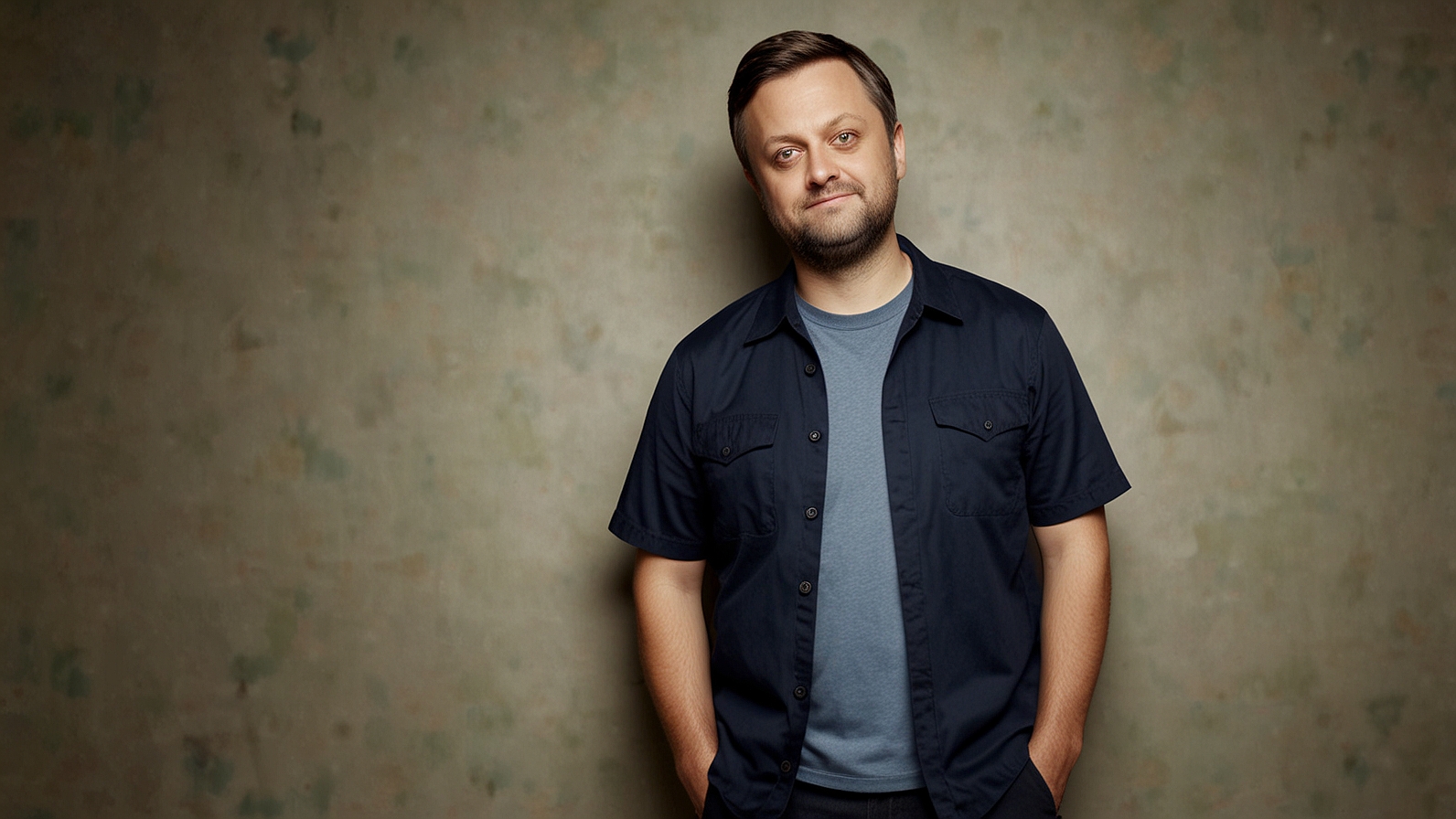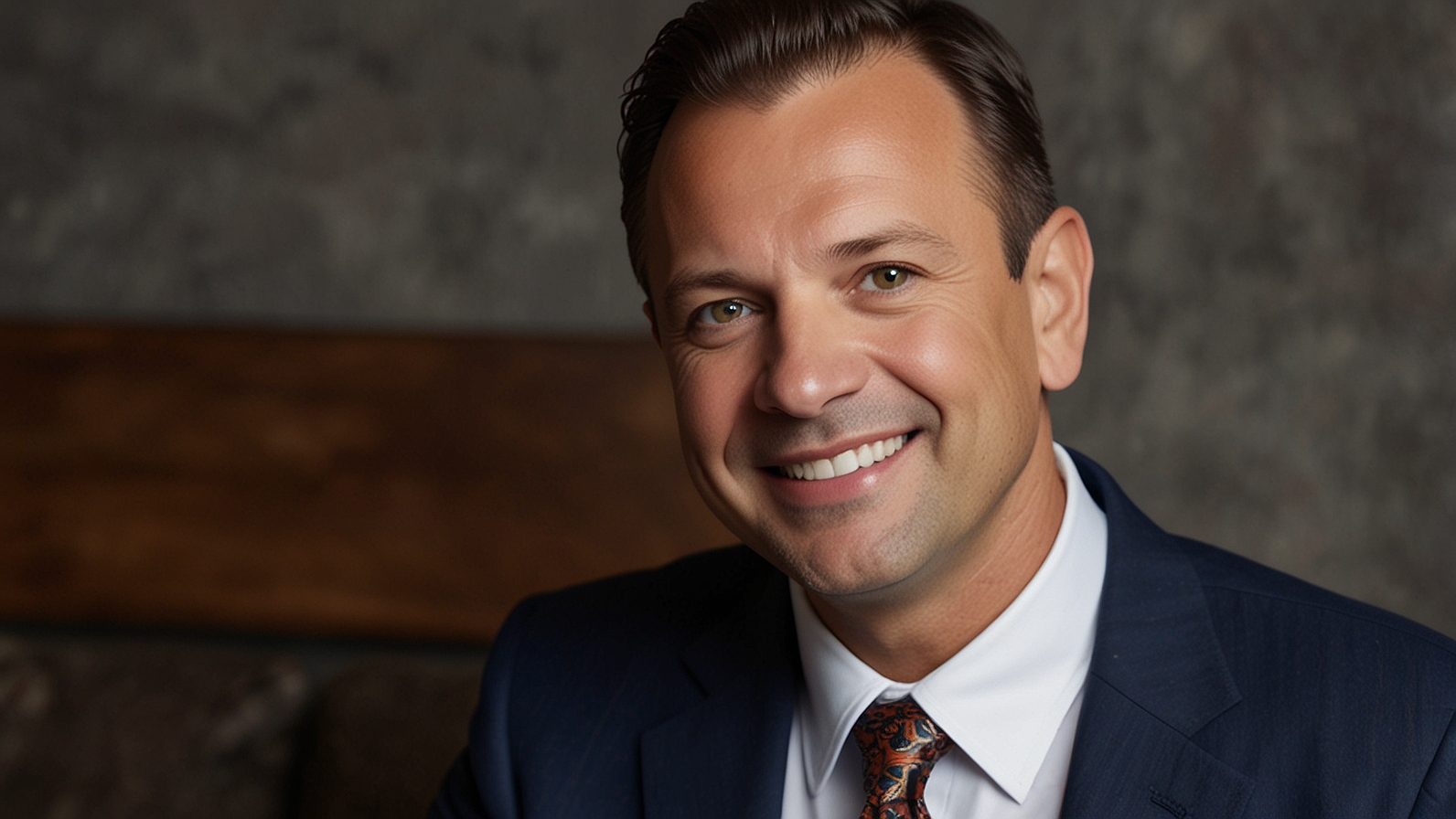Celebrity
Mike Vitar: From Sandlot Star to Real-Life Hero

Remember the pure, sun-drenched joy of a childhood summer? For many of us, that feeling is forever captured in the 1993 classic, The Sandlot. And at the center of it all was Benny “The Jet” Rodriguez—the cool, kind-hearted kid who could run like the wind. The actor who brought him to life, Mike Vitar, seemed destined for Hollywood fame. But then, he seemingly vanished from the spotlight. His story, however, is far from over; it’s a tale of one star who traded the studio backlot for the front lines, becoming a different kind of hero altogether.
Introduction to Mike Vitar’s Dual Legacy
While countless child stars struggle with the transition to adulthood, Mike Vitar charted a different course. His narrative isn’t one of faded fame, but a purposeful pivot from cinematic make-believe to tangible, public service. After charming a generation as the iconic Benny and appearing in family favorites like the Mighty Ducks sequels, he walked away from acting. He didn’t disappear; he reinvented himself, first as an Emergency Medical Technician (EMT) and then as a respected firefighter for the Los Angeles Fire Department (LAFD). This article explores the two acts of Mike Vitar’s remarkable life: the beloved actor of the 1990s and the dedicated first responder he chose to become.
The Ascent of a 90s Icon
Long before he was fighting fires, Mike Vitar was winning the hearts of audiences on the big screen. His career, though brief in Hollywood terms, left an indelible mark on 90s pop culture.
- Benny “The Jet” Rodriguez in The Sandlot (1993): This was his defining role. Vitar didn’t just play a character; he became the embodiment of childhood leadership and loyalty. From his legendary backward run to his climactic showdown with “The Beast,” his performance felt authentic and grounded. He wasn’t a caricature of a cool kid; he was the friend every child wished they had.
- Luis Mendoza in D2: The Mighty Ducks (1994) and D3: The Mighty Ducks (1996): Vitar further cemented his place in the family film hall of fame as the speedy, comedic hockey player who couldn’t stop. His portrayal added warmth and humor to the ensemble cast, making him a fan favorite in another hugely successful franchise.
- Other Appearances: His filmography also includes The Big Green (1995) and a role in the teen comedy First Kid (1996), showcasing his consistent presence in the family-friendly genre throughout the decade.
What set Vitar apart was his relatable on-screen persona. He never felt like a polished, industry kid, but like a regular boy you might actually meet at the ballpark.
The Pivot: Why Mike Vitar Left Acting Behind
As the 1990s drew to a close, so did Mike Vitar’s acting career. Unlike many who are pushed out by a fickle industry, his exit appears to have been a conscious and personal choice. The “why” remains a subject of fascination for fans, but the evidence points to a desire for a more grounded and impactful life.
Trading Scripts for Service
The glitz and glamour of Hollywood, it seems, couldn’t compete with the call to serve his community. After his final credited role in 1997, Vitar embarked on a completely new path.
- Stepping Away from the Spotlight: He quietly left the acting world, avoiding the media circus that often follows child stars.
- Emergency Medical Training: He pursued and completed training to become an EMT, a demanding and often thankless job that forms the backbone of emergency medical services.
- Joining the LAFD: Building on his EMT experience, he entered the fire academy and was eventually sworn in as a firefighter with the Los Angeles Fire Department, a role he served in for nearly two decades.
This transition wasn’t a fall from grace; it was a climb toward a different summit. The discipline, teamwork, and physical fitness required for acting—especially in sports roles—likely served him well in his new, even more demanding career.
Mike Vitar’s Life as an LAFD Firefighter
For over 18 years, Mike Vitar was Firefighter Mike Vitar. His identity was no longer tied to a character he played in the 90s, but to the real-life heroism he demonstrated daily. While he maintained a private life, public records and LAFD sources confirm his long and commendable service.
A Different Kind of Team
The firehouse operates on many of the same principles as the sandlot or a hockey team: unwavering trust, seamless collaboration, and a shared commitment to a common goal. Where his previous “team” worked to win a baseball game, his new team worked to save lives and property.
A Day in the Life vs. A Day on Set:
| Life as an Actor | Life as a Firefighter |
|---|---|
| Memorizing lines | Memorizing emergency protocols |
| Hitting marks on a set | Navigating chaotic and dangerous scenes |
| Working with a cast and crew | Relying on a tight-knit firehouse crew |
| Creating believable fiction | Confronting very real emergencies |
| Goal: Entertain an audience | Goal: Protect and serve the community |
This table illustrates the profound shift in his daily reality. The adrenaline was no longer simulated; it was real. The stakes were no longer about box office numbers; they were about human lives.
The Enduring Legacy: More Than Just a Sandlot Memory
Mike Vitar’s story resonates so deeply because it subverts the typical child star narrative. It’s a story of purpose, humility, and the redefinition of what it means to be successful.
The Full Arc of a Life Well-Lived
His legacy is a dual one, and both parts are worthy of celebration:
- A Cultural Touchstone: He gifted an entire generation with timeless performances that continue to bring joy. For millions, he will forever be “The Jet,” a figure of nostalgic warmth.
- A Model of Quiet Service: He demonstrated that walking away from fame to pursue a meaningful, ordinary life is not a failure, but a profound success. His second act as a first responder adds a layer of real-world nobility to his story.
His journey reminds us that our initial path doesn’t have to be our final destination. It’s never too late to step back, reassess, and channel your energy into something that truly matters to you. Mike Vitar didn’t just play a hero in a movie; he grew up to become one in real life.
Key Takeaways
- Mike Vitar is a classic example of a child star who successfully transitioned to a completely different and fulfilling career.
- His decision to leave acting for public service was a conscious choice, leading to an 18-year career with the LAFD.
- His legacy is uniquely powerful, combining cherished pop culture memories with the respect earned from a life of service.
His story makes you wonder: what other quiet heroes walk among us, their extraordinary pasts hidden behind a uniform of service?
You May Also Read: Mariah Bird: The Private Professional Forging Her Own Path
FAQs
What is Mike Vitar doing now?
After a long and respected career as a firefighter with the Los Angeles Fire Department, Mike Vitar has retired from public service. He maintains a very private life away from the public eye.
Why did Mike Vitar stop acting?
While he never gave a detailed public statement, it is widely understood that he voluntarily left the film industry to pursue a more stable and personally fulfilling career in emergency services, first as an EMT and then as a firefighter.
Was Mike Vitar also in the Mighty Ducks movies?
Yes, he played Luis Mendoza, the speedy hockey player from Cuba who had trouble stopping, in both D2: The Mighty Ducks (1994) and D3: The Mighty Ducks (1996).
How long did Mike Vitar serve as a firefighter?
He served with the Los Angeles Fire Department for approximately 18 years, from the early 2000s until his retirement.
Did his background as an actor help him as a firefighter?
While the jobs are very different, the teamwork, discipline, and ability to perform under pressure required for acting likely translated well to the high-stakes, collaborative environment of firefighting.
Is Mike Vitar active on any social media?
No, Mike Vitar has no known public social media profiles and has consistently valued his privacy since leaving the entertainment industry.
What is Mike Vitar’s most famous role?
Without a doubt, his most famous and beloved role is Benny “The Jet” Rodriguez in the 1993 coming-of-age film The Sandlot.
Celebrity
Nate Bargatze Height: How the Comedian’s Stature Became a Quiet Giant in Comedy

You ever notice how some things just become… common knowledge? You don’t remember learning them; they’re just part of the mental furniture. For fans of dry, impeccably timed comedy, a few facts about Nate Bargatze fall into that category. He’s from Tennessee. He’s a clean comic. And, of course, there’s the matter of Nate Bargatze height.
It’s a topic that pops up with surprising regularity, not because it’s outrageous, but precisely because it’s so… normal. In a world of towering leading men and larger-than-life personalities, Bargatze’s reported stature of around 5’8″ (that’s roughly 173 cm for our metric friends) feels almost refreshingly average. But here’s the thing—when you’re that funny, “average” becomes a superpower.
Let’s pull up a stool and get into the details. Why does his height even register? How does it play into his everyman persona? And is the commonly accepted figure the whole story?
So, How Tall is Nate Bargatze, Really?
Let’s just cut to the chase. After sifting through countless interviews, fan photos, and celebrity databases, the consensus is overwhelmingly in favor of Nate Bargatze standing at 5 feet 8 inches tall. That’s 173 centimeters. It’s not a number he seems to hide from or particularly lean into; it’s just a fact, like his killer deadpan delivery.
You won’t find him boasting about it in his Netflix specials, but you also won’t find a flood of articles debating if he’s wearing elevator shoes. The figure is consistently reported because it’s visually verifiable. When he stands next to other comedians or hosts on talk shows, the math checks out. It’s one of those rare pieces of celebrity trivia that seems to be settled, free from the usual Hollywood inflation.
And honestly, in an industry where a few inches can sometimes mean the difference between getting a role or not, that consistency is kind of remarkable.
The Psychology of the “Average” Height in Comedy
This is where it gets interesting. Why are we, the audience, even slightly preoccupied with a comedian’s physical dimensions? Well, it’s not really about the tape measure. It’s about relatability.
Comedy, especially the kind Bargatze masters, is about connection. We’re laughing with him at the absurdities of everyday life—the perils of modern technology, the quirks of family, the quiet humiliations of being a regular person. His height, sitting right in the average range for American men, acts as a visual amplifier for his everyman charm. He isn’t a chiseled Adonis looking down from a pedestal; he’s the guy you might stand next to in line at the grocery store, who just happens to have a brilliantly funny take on the whole experience.
His stature contributes to a persona that is non-threatening, grounded, and deeply authentic. You believe his stories about awkward interactions and domestic bliss because he looks like he’s lived them. It’s a classic case of form supporting function. The packaging perfectly matches the product.
Nate Bargatze Height in Perspective: A Comedian Comparison
Okay, let’s get visual. Numbers on a page are one thing, but seeing how he stacks up—pun intended—against his peers really drives the point home. It’s not that he’s short; it’s that he exists in a comfortable middle ground, a sweet spot of normalcy.
Check out this comparison. It’s not about ranking, but about context.
| Comedian | Height | The Vibe |
|---|---|---|
| Kevin Hart | 5′ 2″ (157 cm) | Leans into his height as a major part of his act; self-deprecating and high-energy. |
| Tom Segura | 6′ 0″ (183 cm) | Has a larger, more physically imposing presence that complements his sometimes darker, more narrative style. |
| Nate Bargatze | 5′ 8″ (173 cm) | The “Relatable Everyman.” His height is neutral, putting the entire focus on his nuanced storytelling and delivery. |
| Bert Kreischer | 5′ 10″ (178 cm) | His shirtless, exuberant persona feels bigger than his actual height; a ball of energy. |
| Jerry Seinfeld | 5′ 10″ (178 cm) | Another master of observational comedy whose average height reinforces his “guy noticing things” persona. |
See the pattern? Bargatze isn’t defined by being short or tall. He’s just… Nate. And in the world of comedy, that’s a strategic advantage. The audience isn’t distracted by an extreme physical trait; they’re locked in on the words, the pauses, the slight smirk. The comedy does all the heavy lifting.
The Footwear Factor: Does He Wear Lifts?
Ah, the million-dollar question for any celebrity who isn’t pushing 6 feet. Let’s be real, Hollywood is the land of apple boxes, camera tricks, and specially crafted footwear. So, does Nate Bargatze employ any of these tactics?
From all observable evidence, the answer appears to be a resounding no.
Watch any of his stand-up specials, particularly the wide shots. You’ll typically see him in standard, low-profile sneakers or casual boots—the kind of footwear chosen for comfort during a grueling hour on stage, not for adding a clandestine inch or two. On red carpets or in interviews, it’s the same story: classic dress shoes or loafers, nothing that screams “elevator shoe.”
This consistent sartorial choice reinforces his brand of authenticity. He’s not trying to be something he’s not. He’s a 5’8″ comic who sells out arenas. That, in itself, is a powerful statement. The confidence to just be your height is far cooler than any trick to disguise it.
Fan Fascination & The Google Search: Why We Ask
Let’s break down the search intent for a second. When someone types “Nate Bargatze height” into Google, what are they really looking for? In my experience as an SEO, it’s rarely just for a number. It’s often one of three things:
- Pure Curiosity: They saw him on a podcast and thought, “Huh, I can’t quite tell how tall he is.” The internet provides the quick answer.
- Relatability Seeking: A fan of a similar height might be looking for that connection, a sense of “Hey, he’s my size and he’s killing it.”
- Settling a Bet: Never underestimate the power of a friendly wager between friends or spouses. The internet is the ultimate arbiter.
This search volume isn’t driven by controversy but by a simple, human desire for context. We are visual creatures, and we like to place the people we watch in a physical world we understand.
The Final Word: Standing Tall Without Trying
So, there you have it. The story of Nate Bargatze height isn’t really a story about inches or centimeters. It’s a case study in how perceived “averageness” can be a profound asset. In a culture obsessed with extremes, Bargatze’s 5’8″ frame is a testament to the power of substance over stature.
His success isn’t in spite of his height; it’s completely independent of it. The talent is just that big. He proves that you don’t need to be a giant to stand out—you just need to be great at what you do. And honestly, that’s a funnier, more inspiring punchline than any height-related joke could ever be. Makes you wonder what else we overcomplicate, doesn’t it?
You May Also Like: Jimmy Failla Wife: The Supportive Partner Behind the Laughter
FAQs
Is Nate Bargatze really 5’8″?
Yes, that’s the consistently reported and visually verifiable height. It’s the accepted figure across multiple credible sources and is evident when he’s standing next to other celebrities.
How tall is Nate Bargatze in centimeters?
Nate Bargatze’s height is approximately 173 centimeters. The conversion from 5 feet 8 inches is a straightforward one, and this metric measurement is widely used internationally.
How does his height compare to his wife, Laura?
From photos and public appearances, Laura Bargatze appears to be of a similar height, perhaps just a touch shorter. They look very proportionate together, which, let’s be honest, is probably the least important but somehow most noticed thing about a happy marriage.
Has Nate Bargatze ever joked about his height in his routines?
Not directly in a self-deprecating way like some comedians. His comedy is more about situational storytelling. He might reference the general experience of being a regular guy, but his height itself isn’t a punchline. The humor is in the life he lives, not the body he lives in.
What is Nate Bargatze’s net worth?
While this article focuses on his height, it’s a common related search. Estimates vary, but due to his massively successful specials, tours, and podcast, his net worth is frequently estimated to be in the range of $5-10 million.
Who are other comedians with a similar everyman vibe and height?
Think of comics like Jim Gaffigan or the late Mitch Hedberg. Their comedy, while distinct, shares that focus on the observational and the relatable, and their physical presence never overshadowed their brilliant writing.
Celebrity
Jimmy Failla Wife: The Supportive Partner Behind the Laughter

Ever wonder who’s the steady hand behind the quick-witted, fast-talking humor of Fox News host Jimmy Failla? While he’s the one in the spotlight, there’s a crucial person in the audience, both literally and figuratively, who provides the foundation for his success: his wife. The story of Jimmy Failla’s wife is one of a supportive, low-key partnership that occasionally steps into the glow of the stage lights, offering fans a heartwarming glimpse into the family man behind the comedian.
Who Is Jimmy Failla’s Wife? More Than Just a Spouse
While Jimmy Failla is an open book when it comes to his comedy and political commentary, he’s chosen to keep the specific details of his family life, including his wife’s name, out of the public eye. This is a conscious and respectable decision to protect his family’s privacy in an increasingly noisy world. However, we do know the most important thing about her: she is his rock.
From his own anecdotes on his radio show and podcast, it’s clear that his wife is his biggest supporter and a grounding force. She’s the person who knows the man behind the microphone, a partner who has been with him through the journey from New York City taxi driver to celebrated comedian and national radio host.
A Glimpse Behind the Curtain: Her On-Air Appearances
As mentioned in the context, Jimmy Failla’s wife is not a complete stranger to his audience. She is his spouse who periodically participates on his shows and family-focused segments. These appearances are often highlights for listeners, as they reveal a different, more personal side of Jimmy.
Imagine a segment where Jimmy, known for his hilarious takes on current events, is gently teased by his wife about his habits at home. Or a family-focused holiday special where they share stories about their children and life off-air. These moments aren’t about creating a media persona for her; they’re about sharing their genuine dynamic. It’s in these unscripted, friendly chats that we see her personality shine—a perfect counterbalance to Jimmy’s high-energy humor. Think of it like a colorful infographic comparing their personalities: his side is all bold, comic-styled explosions of news and jokes, while hers is a calm, collected, and warmly humorous chart of home life.
The Balancing Act: Family Life in the Public Eye
Raising a family while one parent has a very public job is no small feat. Jimmy has often spoken about the importance of his family, and it’s a role that Jimmy Failla’s wife navigates with apparent grace. She manages the real world so he can comment on it, creating a stable and normal environment for their children away from the glare of the media.
This is the part of the story that often goes untold. Yes, intermittent fasting can work for busy parents, and yes, a company can boost sales by 30% with a new strategy, but building a happy family life while in the public eye? That’s the real success story. It’s a team effort where she holds down the fort, allowing Jimmy to travel for his “Fox Across America” tours and film his weekend shows, knowing everything at home is in capable hands.
3 Key Takeaways About Jimmy Failla’s Partnership
So, what can we learn from the dynamic between Jimmy Failla and his wife?
- Partnership is Key: Their relationship is a classic example of a strong partnership. He’s the public face, and she’s the private anchor, and both roles are equally vital to their shared success.
- Privacy is a Choice: Choosing to keep certain details private, even while being a public figure, is a powerful way to maintain authenticity and protect what matters most.
- Humor Helps at Home: From the glimpses we get, it’s clear their home is filled with laughter and mutual respect—the ultimate recipe for a strong family unit.
The story of Jimmy Failla’s wife isn’t about fame or notoriety; it’s about the quiet, powerful support that makes public success possible. It makes you wonder, who’s the unsung hero in your own life that makes your achievements possible?
You May Also Like: The Mystery of Taylor Breesey Face
FAQs
Q: What is Jimmy Failla’s wife’s name?
A: Jimmy Failla has chosen not to publicly disclose his wife’s name, a decision made to protect his family’s privacy.
Q: How did Jimmy Failla meet his wife?
A: The details of how they met have not been shared publicly. Jimmy keeps the origin story of their relationship private.
Q: Does Jimmy Failla’s wife work in media?
A: There is no public information suggesting she works in media. From Jimmy’s anecdotes, she appears to focus on their family life.
Q: How many children do Jimmy Failla and his wife have?
A: Jimmy Failla and his wife have children together, but he has not publicly stated the exact number or their names, again to protect their privacy.
Q: Why does Jimmy Failla’s wife sometimes appear on his show?
A: She makes occasional, friendly appearances during family-themed or more personal segments, giving listeners a glimpse into their life together and adding a personal touch to the show.
Q: Is Jimmy Failla’s wife active on social media?
A: No, she does not appear to have any public social media profiles, aligning with the couple’s decision to maintain a private family life.
Celebrity
The Mystery of Taylor Breesey Face

Imagine building a massive online community where you share everything about your life—your favorite outfits, your daily workouts, the cozy corners of your home. You share it all, but you never fully reveal your face. What kind of power and mystery would that create? This isn’t a hypothetical scenario; it’s the exact, brilliant strategy employed by social media sensation Taylor Breesey. Her content on country living, fitness, and fashion is everywhere, yet the relentless curiosity surrounding Taylor Breesey’s face remains a central pillar of her brand’s intrigue. So, why would someone succeed by hiding in plain sight? Let’s explore the “why” behind this unique and wildly successful approach.
Who is Taylor Breesey? Building a Brand Beyond a Face
Before we dive into the mystery, let’s establish who we’re talking about. Taylor Breesey is a powerhouse content creator who has carved out a unique space in the digital world. She operates at the intersection of country, fitness, and fashion, building an aspirational yet strangely relatable lifestyle aesthetic. Her feed feels less like a curated gallery and more like a peek into a dream life.
Her success isn’t built on a single post but on a foundation of strong, consistent content pillars:
- Country-Living Aesthetic: Think sprawling fields, rustic home decor, pickup trucks, and the feeling of a slow, intentional life away from the city buzz.
- Fitness & Wellness: She shares effective workout routines and healthy eating tips that feel achievable, often set against the backdrop of a home gym or the great outdoors.
- Fashion & Style: From boutique hauls to styling sessions, her fashion is trendy yet functional—perfect for the girl next door who also has an eye for design.
In short, Taylor Breesey isn’t just a person; she’s a persona built around a specific, desirable way of life.
The Strategy of Secrecy: Why the Mystery of the taylor breesey face Works
In an era of digital oversharing, choosing anonymity isn’t just a quirk—it’s a powerful psychological strategy. Think of it like reading a book where the main character is described but never fully pictured. Your mind instinctively fills in the gaps, creating a deeper, more personal connection to the story. Similarly, by not showing her face, Taylor allows her followers to project themselves into her lifestyle. The fantasy becomes more about “you” and less about “her.”
This deliberate secrecy offers several key benefits:
- Focus on the Content: The lifestyle itself becomes the star. Without a face to latch onto, followers are forced to engage with the aesthetic, the products, and the vibe she’s selling.
- Control Over Privacy: It’s a brilliant way to maintain a public career while safeguarding a private personal life. She gets to share her world without surrendering her entire identity.
- Built-In Intrigue: The mystery itself generates endless discussion and curiosity. Each new post fuels the “Will we see her today?” speculation, which organically drives follower growth and engagement.
This approach isn’t entirely new, either. Similarly, the theatrical band Ghost, the elusive artist Banksy, and even singer Sia have all leveraged anonymity to build massive intrigue and focus the audience on their art, not their persona.
How Taylor Breesey Masters the “Faceless” Influencer Model
So, how does she pull it off without her content feeling empty or impersonal? It all comes down to a tactical shift in the traditional influencer model. Let’s break it down:
Two Approaches to Influencer Stardom
| Feature | Traditional Influencer | Taylor Breesey’s Model |
|---|---|---|
| Focus | Personal Life & Face | Lifestyle & Aesthetic |
| Engagement Driver | Personality & Likability | Mystery & Relatability |
| Content Core | “Look at me” | “Imagine yourself here” |
| Privacy Level | Low | High and Controlled |
As you can see, her model flips the script. Instead of building a parasocial relationship based on her personal identity, she builds one based on a shared aspiration. Her audience isn’t following “Taylor” the individual as much as they are following the “Taylor” lifestyle ideal.
Addressing the Curiosity: Where Can You See Taylor Breesey?
Let’s tackle the big question head-on. If you’re desperately curious, you might be wondering where you can finally put a face to the name. The answer lies in the distinction between public and private platforms.
On her main, public channels, the facade is maintained perfectly. However, like many savvy creators, it is believed that Taylor operates a private, more personal platform—such as a subscribers-only page or a separate private Instagram. This isn’t an invitation to intrude; rather, it’s a smart business decision. It creates an exclusive “inner circle” for her most dedicated fans, offering a potential glimpse behind the curtain as a reward for their support, all while keeping her public brand mystique intact.
The Future of the Persona: Will the Mystery Last?
What happens next? The future of the Taylor Breesey persona is a fascinating topic. On one hand, the mystery is her brand’s engine. Revealing her face could demystify the entire operation and shift the focus in unpredictable ways. On the other hand, could the intrigue eventually plateau?
We can look to the “Sia effect” for clues. The singer maintained her anonymity for years, using wigs and props to hide her face, which only amplified interest in her music. When she eventually stepped into the spotlight, it was a major event. While it changed her relationship with the public, her artistic legacy was already firmly established. Similarly, if Taylor Breesey ever chooses to reveal herself, it would need to be a calculated move that respects the brand she has built, potentially ushering in a new, but different, chapter.
The Takeaway: The Power of Anonymity
In a digital world screaming for visibility, Taylor Breesey’s story is a masterclass in the power of restraint. She proves that you don’t need to bare your entire soul to build a loyal community. Sometimes, the most compelling brand is one that lets the audience dream, leaving just enough to the imagination. Strategic anonymity isn’t about hiding; it’s about creating a more focused, intriguing, and sustainable connection.
What do you think? Does the mystery make an influencer more intriguing, or do you prefer a more transparent, face-forward connection? Share your thoughts in the comments!
You May Also Like: Will Theron Roth: Navigating Life in the Glare of a Famous Shadow
FAQs
Why does Taylor Breesey hide her face?
It’s a strategic branding choice that shifts focus to her lifestyle content and allows her to maintain a layer of privacy, generating intrigue in the process.
Has Taylor Breesey ever shown her face?
While she primarily keeps her identity concealed on her public platforms, it is believed she shares more personally with a closer, private community or on subscription-based services.
What is Taylor Breesey’s real name?
“Taylor Breesey” is the name of her public persona. Like many creators, she may use a stage name as part of her brand identity.
How can I be an influencer without showing my face?
Taylor’s model shows it’s possible by focusing on a strong niche (e.g., voiceovers, hands-only crafts, scenic travel, pet content), using distinctive aesthetics, and engaging deeply with your community.
Is Taylor Breesey’s strategy sustainable long-term?
The longevity relies on consistently delivering valuable content and maintaining the audience’s connection to the lifestyle rather than the individual. Many anonymous artists have had long-lasting careers.
Does hiding her face hurt her brand deals?
Not necessarily. It attracts brands that align with her specific aesthetic (e.g., clothing, home decor, fitness equipment) where the product, not the creator’s face, is the focus.
-

 Tech11 months ago
Tech11 months agoExplore iZoneMedia360 .Com Features & Benefits
-

 Home Improvement10 months ago
Home Improvement10 months agoEasy Ways to Clean and Maintain Your Foam Play Mat
-

 Celebrity11 months ago
Celebrity11 months agoWho Is Andrew Santino Wife? The Full Story
-

 Entertainment11 months ago
Entertainment11 months agoRemembering Melanie Olmstead Yellowstone’s Unsung Hero
-

 Uncategorized11 months ago
Uncategorized11 months agoPrairie Dog Guide: Habitat, Behavior, and Conservation
-

 Celebrity11 months ago
Celebrity11 months agoA Deep Dive into Jeremy Allen White Movies and TV Shows
-

 Business11 months ago
Business11 months agoHow Influencersginewuld Shapes the Future of Branding
-

 Apps & Games11 months ago
Apps & Games11 months agoThe Pizza Edition Games: A Perfect Slice of Fun and Flavor





